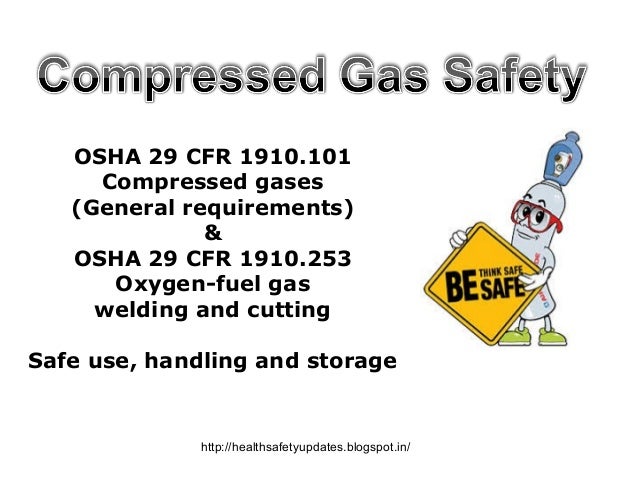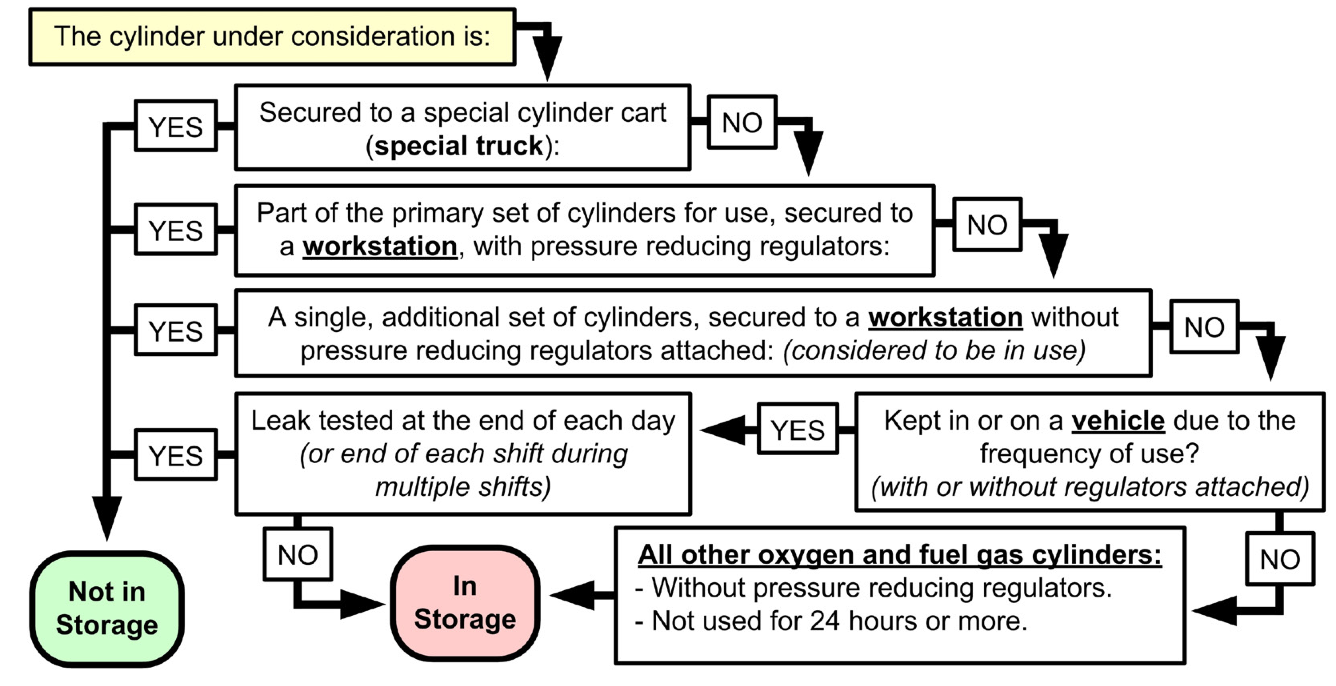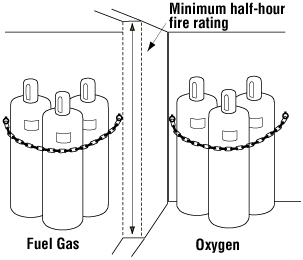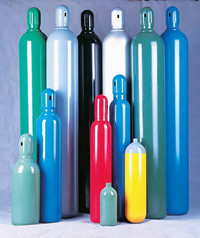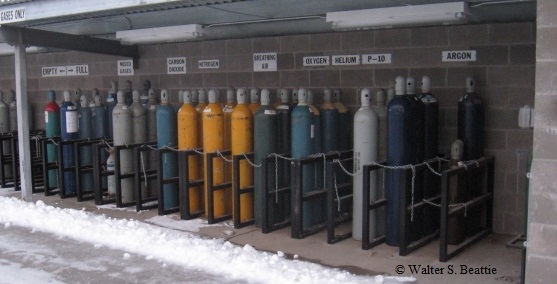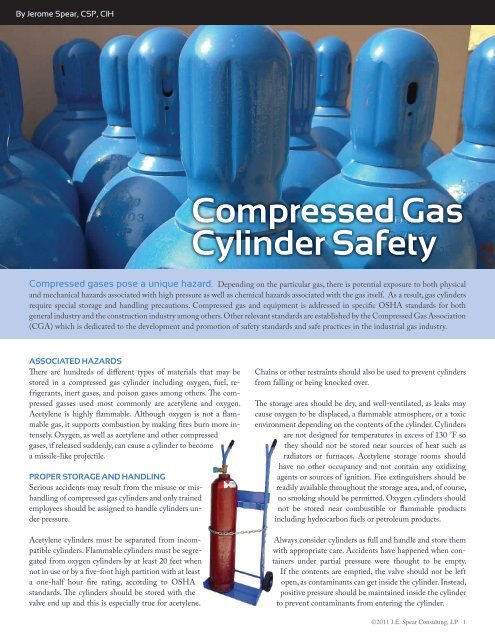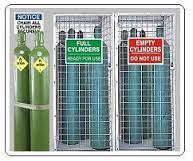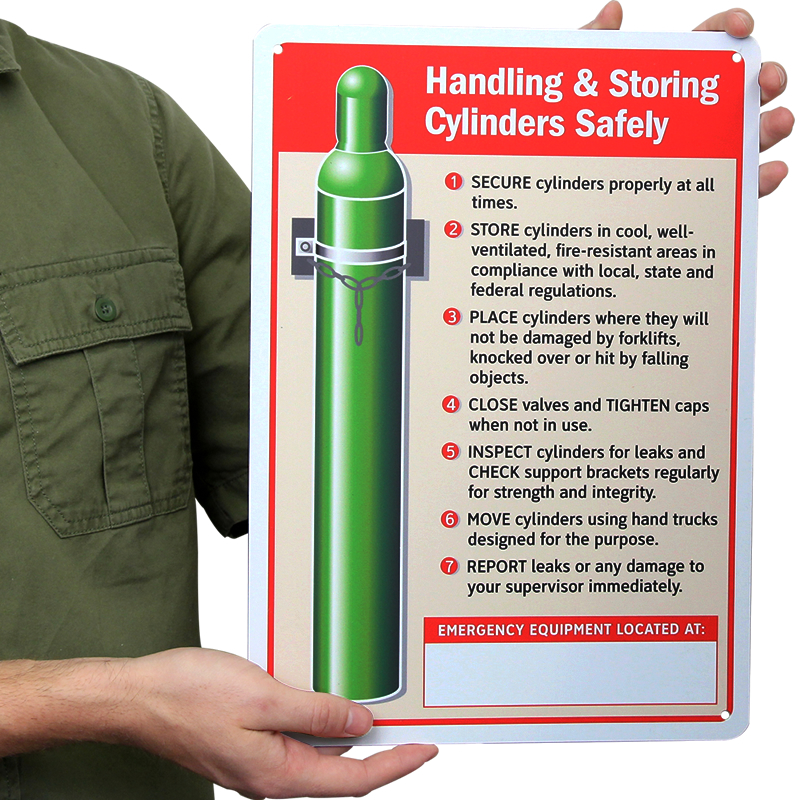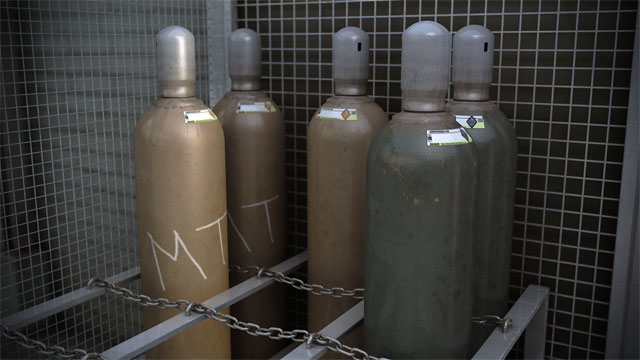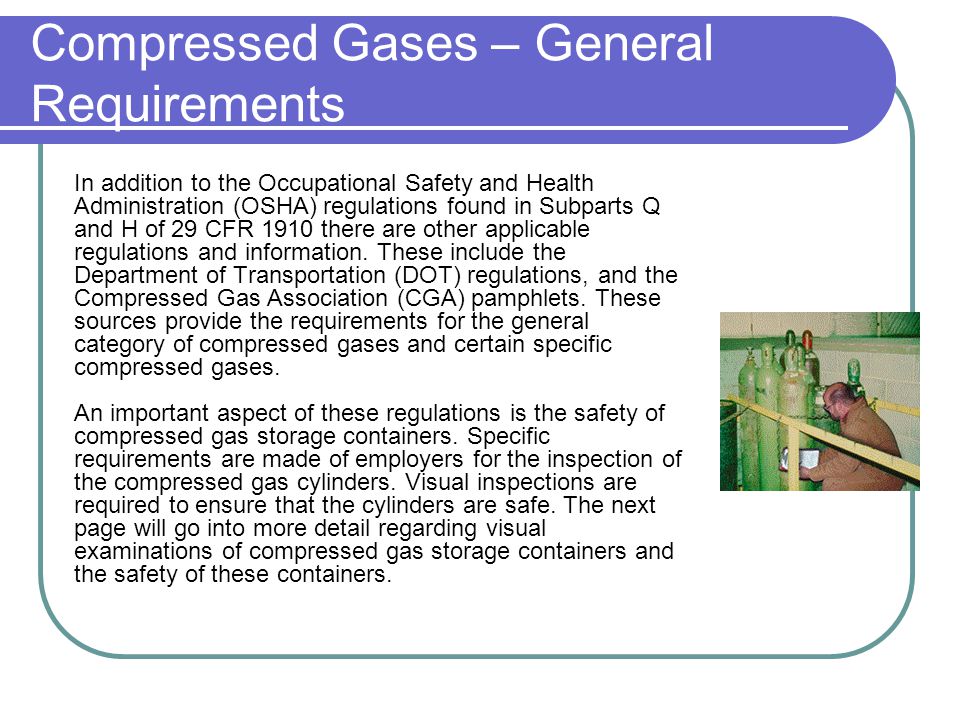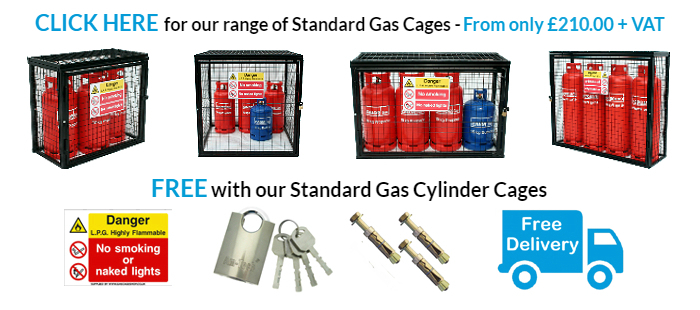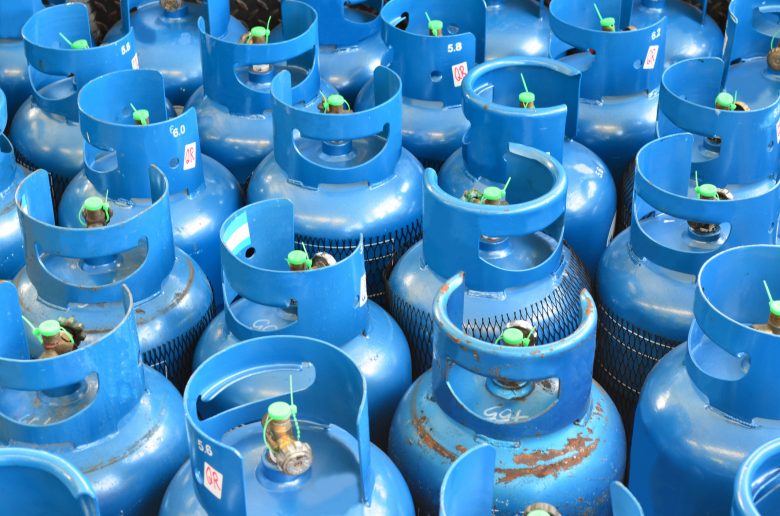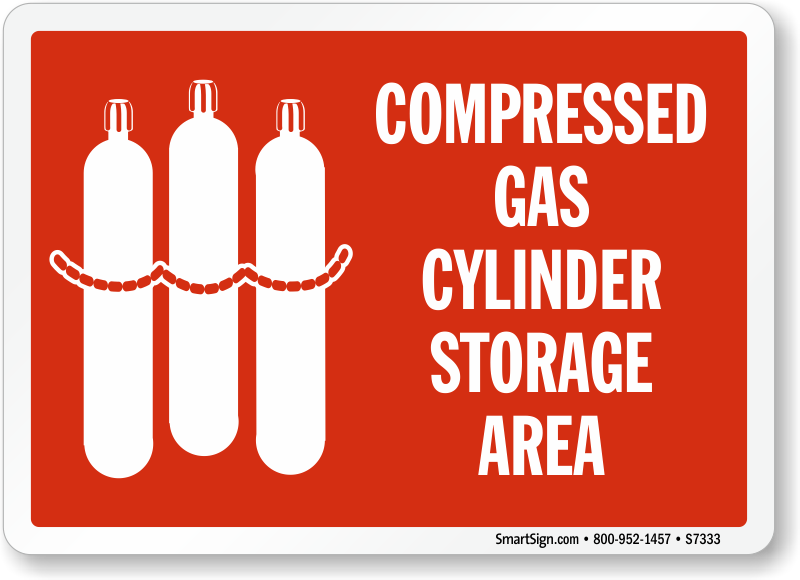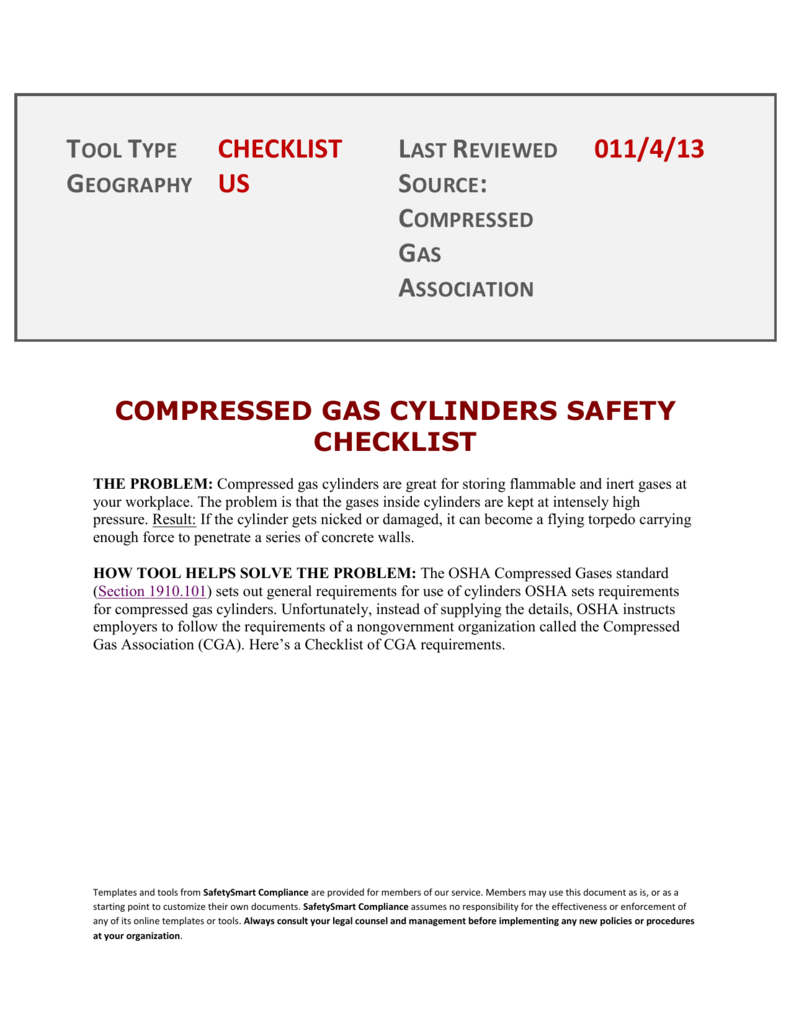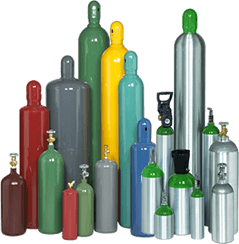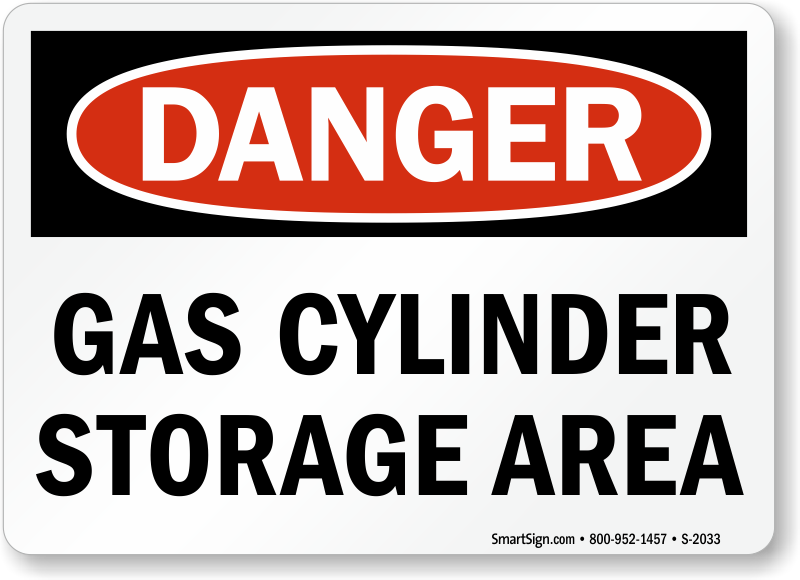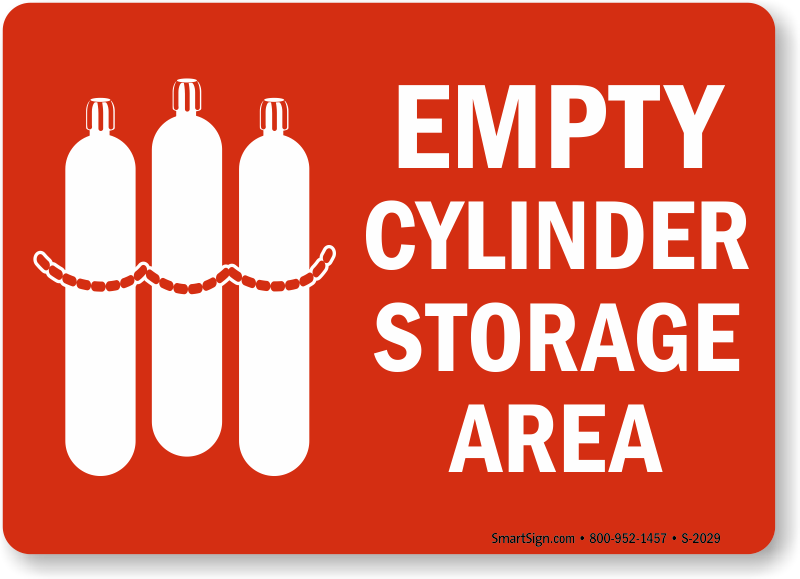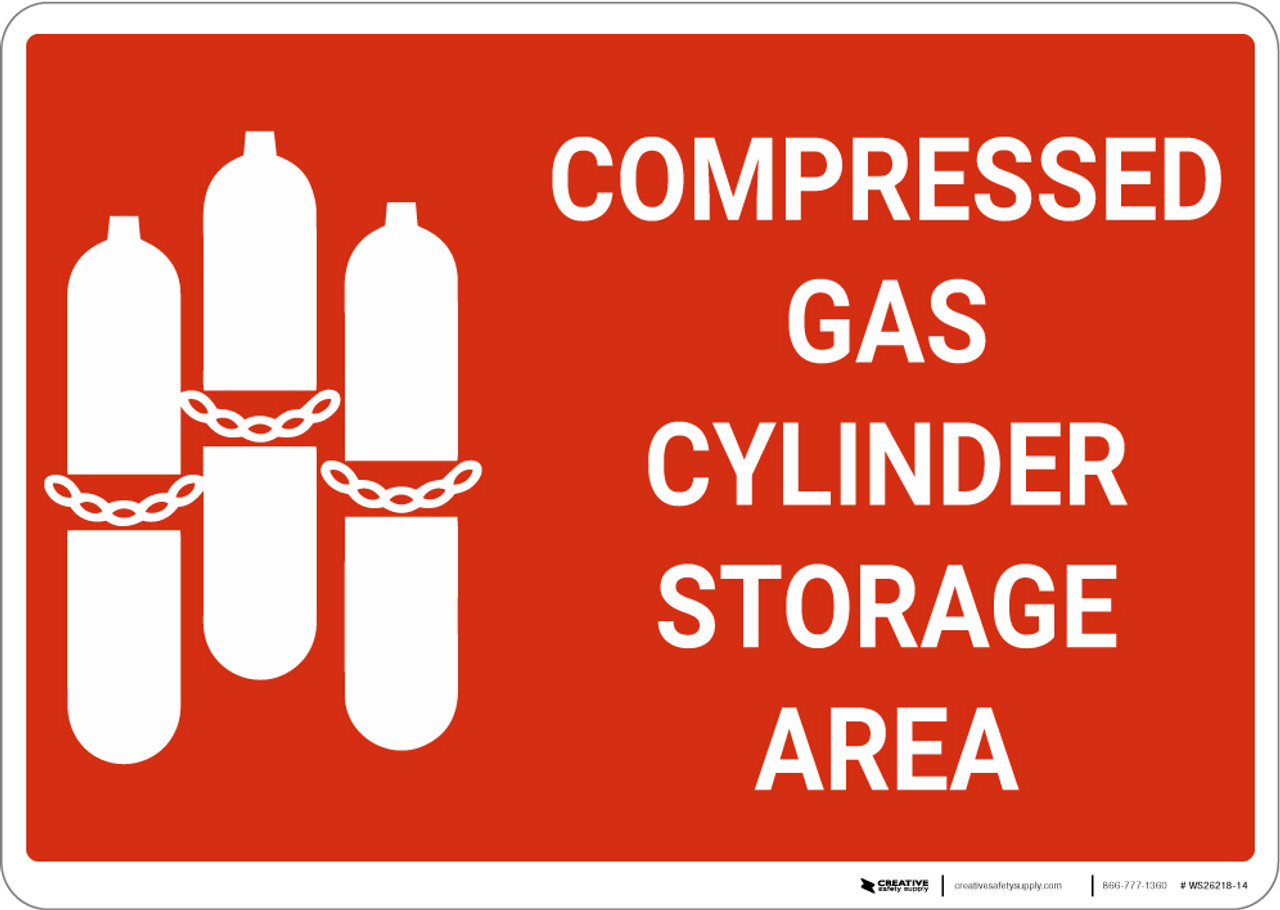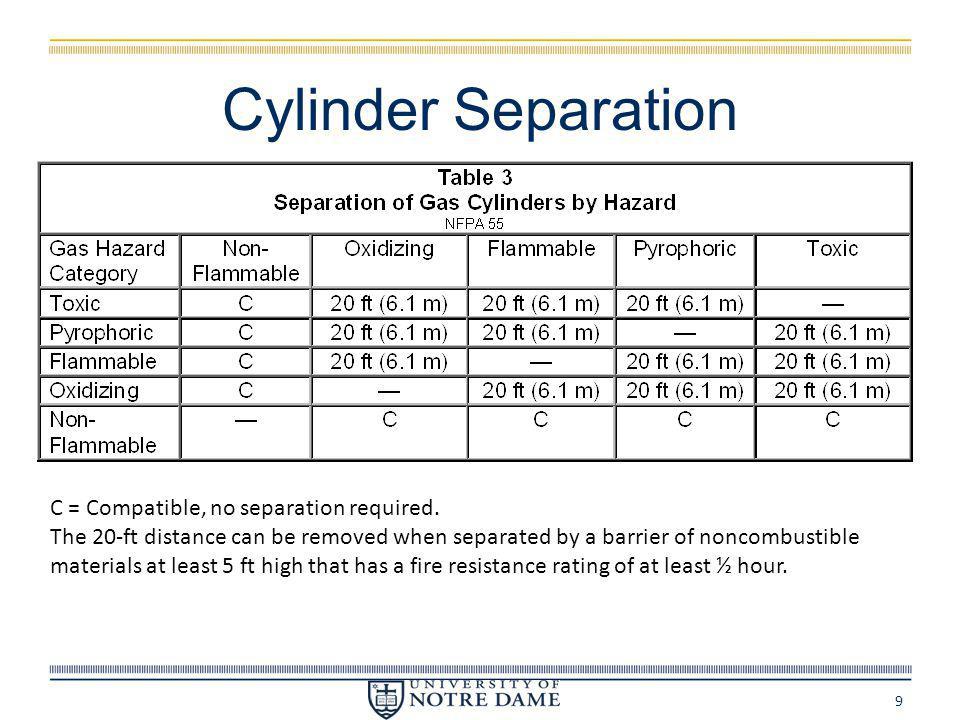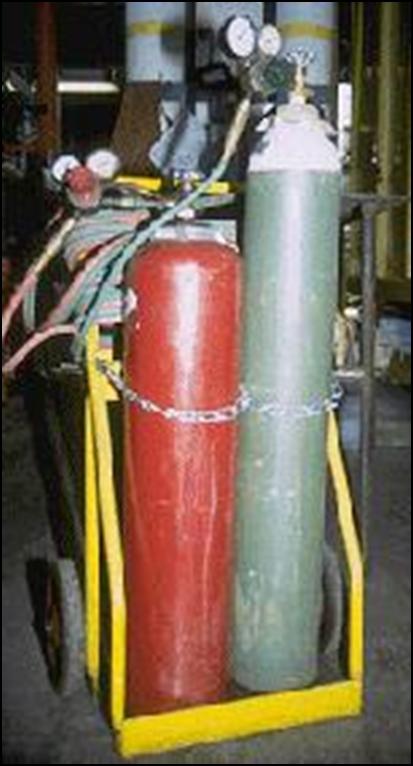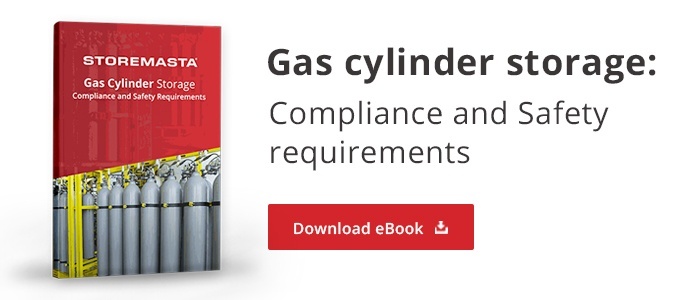The handling use and storage of compressed gas cylinders in applications other than welding and cutting in general industry workplaces is governed by osha s compressed gases standard 29 cfr 1910 101.
Compressed gas cylinder storage requirements osha.
29 cfr 1910 104 oxygen.
29 cfr 1910 103 hydrogen.
Hazards associated with compressed gases include oxygen displacement fires explosions and toxic gas exposures as well as the physical hazards associated with high pressure systems.
Include firewalls for cylinders with contents that pose different types of hazards.
29 cfr 1910 105 nitrous oxide.
Here are the compressed gas cylinder storage tips.
Special storage use and handling precautions are necessary in order to control these hazards.
Industrial gas cylinders are color coded to provide identification at a glance.
Osha standard 1910 101 compressed gases and cylinders must be properly stored transported and used to prevent injury and accidents.
Regulators cylinders and cylinder valves must be inspected regularly to ensure safe operation.
Osha compressed gas cylinders common oversights of safety issues found within osha regulations excerpts the actual osha standard 1910 253 b 2 ii says inside of buildings cylinders shall be stored in a well protected well ventilated dry location at least 20 6 1m feet from highly combustible materials such as oil or excelsior.
Oxidizers should not rest within twenty feet of gases which are flammable.
Keep the tanks away from the sun flames sparks and areas that reach and exceed 125 degrees fahrenheit.
